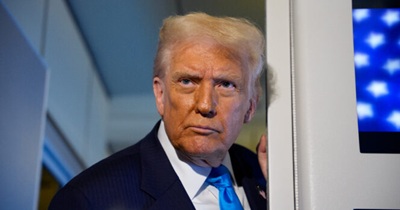Ten months into his second presidential term, Donald Trump continues to describe his administration as a success story. In speeches and on social media, he highlights what he considers major accomplishments—ending foreign conflicts, sustaining economic growth, lowering certain taxes, and strengthening America’s global standing.
But while Trump paints a picture of progress, recent opinion polls suggest that many Americans view his presidency quite differently.
Economic Strain and Cost of Living Lead Public Concerns
A new CNN/SSRS survey conducted in late October among 1,245 adults nationwide shows that only 37% of Americans approve of Trump’s performance. That marks a steep decline from 47% earlier this year.
Meanwhile, 63% disapprove, nearing levels recorded after the January 6 Capitol riot. These numbers indicate widespread dissatisfaction with the direction of the country.
The economy remains the top concern for many households. Nearly half of those surveyed (47%) said rising prices and living costs are their primary worry. Over the past few months, Americans have seen noticeable increases in grocery, energy, and housing expenses, putting additional strain on family budgets and retirees alike.
The state of U.S. democracy ranked as the second-highest concern, with 26% citing it as their top issue. This points to growing unease not just about the economy but also about the long-term health of American institutions.
Interestingly, immigration—a major focus of Trump’s earlier campaigns—was listed by only 10% of respondents as a key concern, suggesting that domestic and financial issues now dominate public attention.
Perception of Policy Performance: Americans Split on Results
According to the same survey, 61% believe Trump’s policies have worsened economic conditions, while 27% say they have improved. Many respondents pointed to challenges such as inflation, job insecurity, and high interest rates as indicators of a weakening economy.
In terms of foreign affairs, 56% feel that Trump’s decisions have hurt America’s global image, compared to 32% who believe they have helped. This growing skepticism reflects concerns about the U.S. role in international diplomacy and partnerships.
A majority—61%—also think the president has overstepped his constitutional authority at times, citing executive orders and unilateral decisions as examples. These opinions highlight ongoing debates about checks and balances in government.
Impact on Upcoming Midterm Elections
With the midterm elections approaching, public dissatisfaction may influence voter turnout and party control in Congress. The survey found that 41% of respondents plan to vote in opposition to Trump, while just 21% say their vote will explicitly support him.
Frustrations over high living costs, political divisions, and governance challenges appear to be shaping the political mood across the nation. If these patterns persist, they could carry major implications for both the president and his party.
Trump’s Response to Polling Trends
Donald Trump has repeatedly dismissed negative polls, calling them “fake” or biased. In a Truth Social post, he wrote that “fake polls” are being circulated by “radical” media outlets and insisted that his “real numbers” remain strong.
He pointed to what he views as his major successes—ending foreign wars, managing inflation, lowering taxes, and keeping the economy stable. Trump emphasized that he remains confident in his leadership and optimistic about America’s future.
This response follows a familiar pattern throughout his political career: disputing unfavorable coverage and reinforcing his own narrative of success. However, most independent surveys continue to show that public confidence in his leadership has weakened, particularly regarding economic and democratic issues.
Historical Context: Comparing Past Presidents
When measured against past presidents, Trump’s current 37% approval rating is notably below average. Historically, approval levels tend to rise or fall with major national events, such as wars or recessions. For example, presidents like George W. Bush and Bill Clinton experienced similar dips during difficult economic periods.
Today’s numbers suggest that public frustration may be deeper and more widespread, reflecting polarization and uncertainty about the nation’s direction.
Public Sentiment and Broader Implications
Low approval ratings do more than signal discontent—they reveal national anxieties about leadership, democracy, and the economy. Many Americans are closely watching how the administration handles inflation, job creation, and global relations.
Concerns about transparency and accountability continue to shape public dialogue, and these perceptions may influence both midterm results and the larger political landscape heading into future elections.
Conclusion
Donald Trump continues to project confidence in his presidency, describing his record as historic. Yet public opinion tells a more complex story.
Economic worries, rising costs, and debates over presidential power dominate the national conversation. As voters prepare for upcoming elections, the contrast between Trump’s self-assessment and public perception could define the next chapter of American politics.



